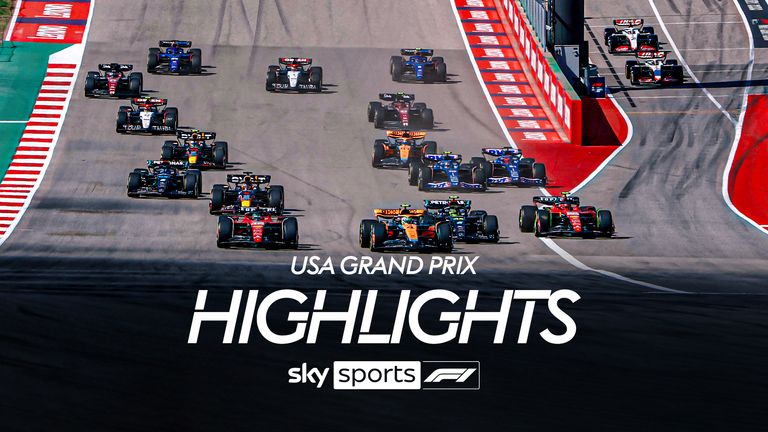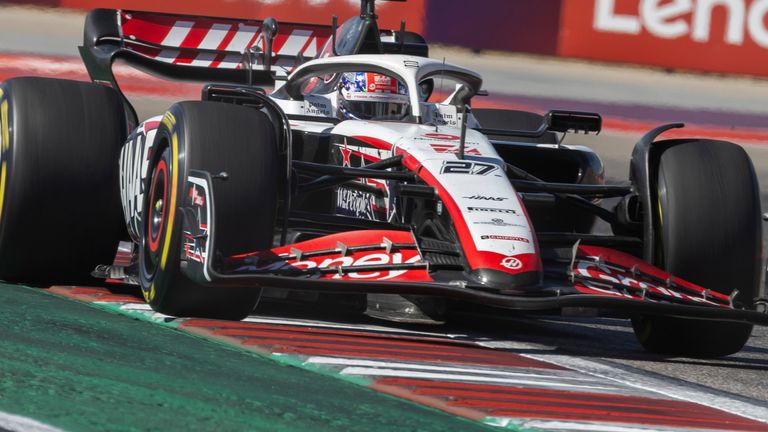Haas' attempt to get United States GP stewards to re-investigate incidents of additional alleged track limits offences in the October 22 race has been rejected.
However, while dismissing the team's challenge on the grounds that the evidence submitted did not meet the required criteria for a successful right of review challenge, Austin stewards described the current situation over monitoring track limits in F1 as "completely unsatisfactory" and have called for changes to be made before the start of the 2024 season.
The stewards say they "strongly recommend to all concerned that a solution to prevent further reoccurrences of this widespread problem be rapidly deployed".
Haas may therefore feel their case was still worthwhile for the wider good in terms of ensuring greater future consistency in officiating the controversial issue of track limits, even if their challenge related to what happened in Austin was dismissed.

Stewards, who reconvened on Thursday afternoon in a video conference which had been adjourned from Wednesday, ruled that Haas' submissions did not meet the required criteria for a full right of review investigation.
A stewards' statement read: "The Petition for the Right of Review is rejected because there is no significant and relevant new element that was unavailable to Haas at the time of the decision"
Haas submitted on-board footage from four rival cars that they believed showed drivers committing track limits breaches at Turn Six, incidents which were not investigated at the time by stewards.
The on-board footage came from Alex Albon and Logan Sargeant's Williams cars, Sergio Perez's Red Bull and Lance Stroll's Aston Martin. The footage of Albon's car also showed the position of following cars.
Albon, who finished ninth, was given a five-second penalty during the race for racking up four instances of leaving the track without justifiable reason but escaped punishment in a second investigation afterwards for alleged Turn Six breaches.
Stewards said that the footage available at that corner was "not sufficient to accurately and consistently conclude" that Albon had committed multiple breaches.
In their summing-up verdict explaining why they dismissed Haas' right of review challenge, stewards determined that the on-board of Albon's car, which also showed following cars, was "significant" as it appeared to show some possible breaches.
However, it was deemed neither new nor relevant as, referring back to its original decision, stewards explained: "Track limit infringements are almost universally enforced based on principal video evidence from a fixed CCTV camera of adequate resolution positioned to clearly see a car's position in relation to the track limit boundary.
"The CCTV camera for Turn 6 did not meet that standard as it did not cover the apex of the corner. Because onboard cameras are only useful for verifying a breach when viewing a car in front of the camera car and not the camera car itself, the Stewards believed they could not accurately and consistently conclude whether a breach occurred for every car on every lap.
"Anecdotal usage of trailing car video, which may or may not be available for any given car's potential breach at any given time does not meet that accurate and consistent evidence standard."
The evidence from Sargeant, Perez and Stroll's cars was deemed to have met none of the criteria to proceed with the right of review.
Stewards want better solutions for detecting track limit breaches
It is the stewards' call for an improved ability to monitor track limits breaches that will therefore have the longer-lasting influence from this case.
"The Stewards have seen individual pieces of evidence that show what appear to be potential track limit breaches at the apex of Turn 6, they find their inability to properly enforce the current standard for track limits for all competitors completely unsatisfactory and therefore strongly recommend to concerned that a solution to prevent further reoccurrences of this widespread problem be rapidly deployed," concluded the stewards' statement.
"Whether the problem is properly addressed by better technology solutions, track modifications, a combination thereof, or a different regulation and enforcement standard, the Stewards leave to those better positioned to make such assessments.
"However, based on the timing of this decision, it is clear that a complete solution cannot, as a matter of practicality, happen this year. But given the number of different circuits where significant track limit issues arose this season, acknowledging that the FIA in conjunction with the circuits have already made significant strides, further solutions should be found before the start of the 2024 season."
The matter of drivers crossing the white line that defines the circuit with all four wheels has been a thorny one in F1 in recent seasons and reached what could be considered as a nadir at this July's Austrian GP when more than 1,200 track limits offences were reported to stewards.
With all incidents unable to be reviewed during the 71-lap, 85-minute race duration, it was not until five hours after the chequered flag fell that additional penalties were imposed on drivers and a final classification issued.
Get ready for the big one: Formula 1 in Las Vegas! See drivers race down the Strip, and past landmarks like Caesars Palace and the Bellagio, on F1's newest street track. Watch the whole Las Vegas GP weekend live on Sky Sports F1 on November 17-19. Stream F1 on Sky Sports with NOW
